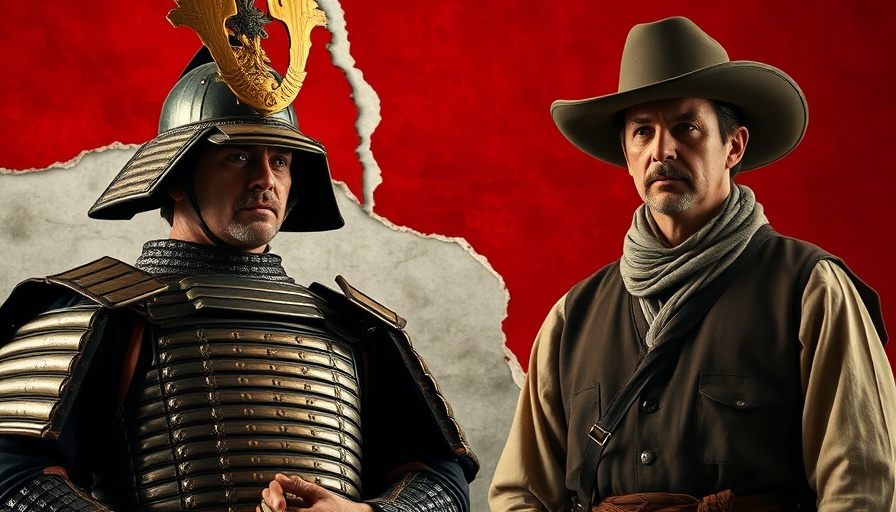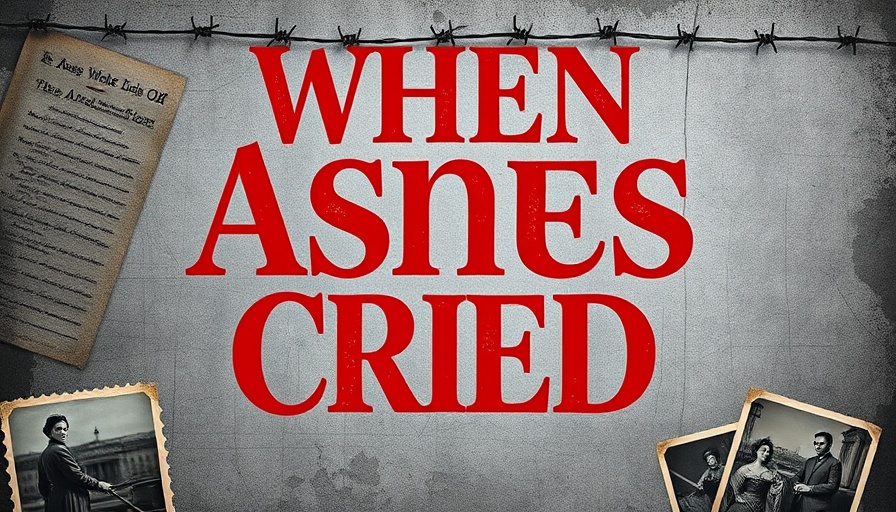
Embarking on a Journey to Feudal Japan
In the recent adaptation of James Clavell's novel "Shogun," audiences are whisked away to Japan in 1600, where an English sailor, John Blackthorne, finds himself shipwrecked amidst a civil war. This retelling explores the distressed dynamics between foreign sailors and samurai warriors, creating a rich tapestry that paints an uncertain yet vibrant portrait of a period marked by honor, intrigue, and the struggle for power.
In 'History Buffs: Shogun,' the discussion dives into the cultural intricacies of feudal Japan, exploring the importance of honor and alliances, which sparked deeper analysis on our end.
The Clash of Cultures: Blackthorne’s Arrival
Blackthorne's initial encounters with the samurai ruling class highlight the intense cultural differences between Westerners and Japanese warriors. Although the adaptation takes creative liberties concerning historical accuracy, it does underscore the tensions between the existing Portuguese influence and the newly arriving English presence. It opens up discussions on globalization and cultural diffusion, themes still relevant today.
The Depth of Honor in Samurai Culture
Throughout the narrative, one of the most compelling aspects is the portrayal of the samurai code of honor. The brutal treatment of a peasant—slain simply for making the sign of the cross—illustrates the harshness of their reality. This shocking act serves as a reminder that in a society governed by strict honor codes, the repercussions of social transgressions were often fatal. By juxtaposing Blackthorne's Western morals with samurai principles, the show invites viewers to navigate the complex landscape of duty and honor.
Real History vs. Fiction: What’s Accurate?
While the show adopts a historical backdrop, it also blends in fictional elements, such as the specific fates and personalities of characters which echo with creative embellishment. For example, Blackthorne’s execution moments in the adaptation are rooted in fictional dramatization, where historical figures like William Adams, the real-life inspiration of Blackthorne, had a markedly different experience in Japan. This blend of fact and fiction enhances the storyline but can create confusion regarding historical truths.
Lessons on Leadership and Strategy
The intricate dance of leadership depicted through characters like Toranaga and Ashida reveals much about political maneuvering. Toranaga’s clever ploys, such as appearing submissive to his rivals, echo principles seen in modern leadership tactics, where perception often holds equal weight to reality. This complexity serves as a historical lesson on the value of strategy and the layers involved in governance that can resonate with today’s discussions surrounding political schemes and integrity.
Understanding the Enduring Legacy
Despite its artistic liberties, "Shogun" represents more than just a story about samurai and foreign sailors; it dialogues about identity, culture, and the relentless human spirit. The adaptation captures the essence of Japan’s transition from a fragmented collection of clans to a unified state under the shogunate, offering an emotional connection to the characters who embody this historical transformation.
Moments of Human Connection
The relationship dynamics in "Shogun," especially Blackthorne’s connection with Maro, offer glimpses into humanizing moments within a stark historical lens. Their relationship, albeit fictionalized, serves to demonstrate themes of love, loyalty, and sacrifice, enriching the story and allowing viewers to see past the armor of the samurai to the personal struggles within. This aspect emphasizes resilience and relatability, connecting the past with contemporary experiences of love and duty.
Action and Reflection: What’s Next?
Fans of historical narratives should approach "Shogun" with an understanding of its blended nature of fiction and fact. It presents an opportunity for viewers to engage with Japan's past while enjoying an engrossing storyline filled with drama and emotion. This adaptation, while not purely historical, embodies the power of storytelling to convey the richness of human experience, proving that history can indeed feel alive.
For more information and insights from my latest book, "Call of the Blackbird" visit here.
 Add Row
Add Row  Add
Add 




Write A Comment